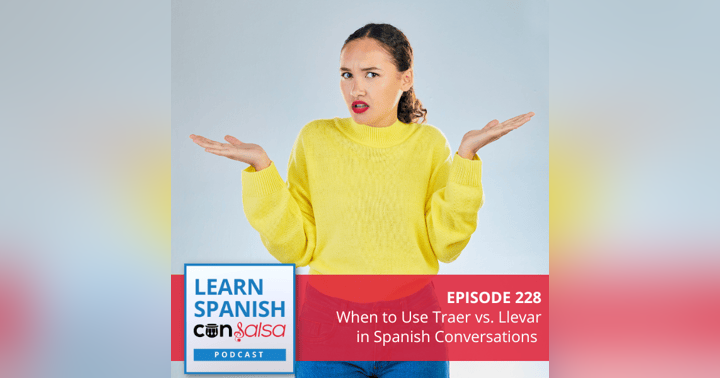My Review of the Mango Latin American Spanish Program

What is Mango Language Learning?
Mango is an online language-learning program that offers 72 different languages and is constantly working to expand. According to the website Mango is “language with beauty and brains…organized, practical, and totally painless.”
Mango is available through a free app or desktop version. The program presents you with a list of goals and topics you will cover in each lesson and then breaks everything down into small, manageable pieces.
You learn vocabulary, grammar, pronunciation, and culture all bundled into one.
The Juicy Parts of Mango
Very visual
Mango offers wonderful visual cues. When presenting sentences, the words are color coded and coordinated between Spanish and English to help you see the translation of each word. You are provided with visual pronunciation keys for new words, a progress bar to see how much you have left in the lesson, and a timer to motivate you to recall words and respond to prompts quickly, like you would in a real conversation (but you can turn the timer off if it stresses you out). You can also view the understood translation of a phrase and the literal translation to better understand the meaning of the word.
The little things
Grammar notes, cultural explanations, auto play, and phonetic pronunciation guides- the features of Mango are endless.
For example, if you are on the go, you can put your lesson on auto play so that you don’t have to swipe through each slide. If you are uncertain about your pronunciation, you can record yourself and compare your pronunciation to the native speaker recording.
If you're just beginning with Mango and don’t know where to start in the lessons, most languages offer a placement test. (The placement test is only available for the desktop version.)
If you're learning Spanish for a specific purpose, there are context-focused courses such as Medical Spanish, Library Spanish, Text Talk, or Romance Spanish. I could go on but I will spare you more details and let you find out some of the fun “extras” for yourself.
Movies, culture and more
I love that Mango includes the cultural aspect of language learning.
Not only do they give you in-depth explanations of the cultural implication of certain words and phrases, there is also the option to learn through movies using Mango Primeire. You can choose from “Movie Mode” where you just watch the movie or the “Engage Mode” where you do activities throughout the movie.
In the “Engage Mode”, each scene begins with a list of words you will encounter in the clip and important cultural notes. You watch about 10 minutes of the movie and then dive into the dialogue you heard phrase by phrase.
This might be a little much for the length of an entire movie but it is a great way to integrate culture and authentic language.
Still Ripening….
No writing
For some people this may not be an issue. It depends on the context or the reason why you are learning Spanish.
If you want to speak Spanish for leisure travel, you will probably get along just fine without extensive writing practice. However, if you are using Spanish for work or study, writing will definitely be a part of your Spanish speaking life.
Mango presents you with the written words and asks you to recall and say them but does not ask you to write words. Unless you are taking notes on your own you will be missing out on this aspect of language fluency.
Cost
Many libraries offer Mango for free with a library membership. If you don’t have access to Mango for free, you'll have to pay out-of-pocket.
For an individual it is $11.99 per month for one language, or $119.99 per year. Granted, this is much less than what you would spend on a formal language course, or even a gym membership, so I guess you have to decide how badly you want to exercise your language speaking muscles.
Translation focused
Mango has a lot of English. For true beginners this can be good because it helps ease you into the language and lessen the language learning anxiety.
Eventually, however, translation becomes a crutch and even a hindrance. It would be nice if the narration slowly transitioned into the target language as well and the translation turned into more of a conversation as you advance through the levels.
Doesn’t go super in-depth
Mango is great for beginning and getting the basics down but it does not appear to offer much beyond that.
From what I've read, more advanced courses are in the works but I was not able to find anything beyond what I would consider low intermediate level content.
Personally, I really like Mango. Although you will not reach a native-like level of fluency with Mango, I think it offers the majority of the tools and resources that you need to get started learning a new language.
The program addresses many different learning styles and offers a great deal of support. It presents you with manageable amounts of information to give you the confidence to keep learning.
So, if you are considering studying a language, Mango is a great place to start, especially if you can use it for free!
Not sure if your library offers Mango? Follow these steps to find out:
1) Go to the Mango website and click on “Start Learning”. It will lead you to a page where you can type in your zip code to find local libraries that have partnered with Mango.
2) If your library comes up, you can click on the name of the library and the site may lead you directly to your local library’s Mango login page. If not, you will have to go to the library website. Mine had Mango listed under E-Resources. You will typically find Mango in the library database or resources.
3) Once you find Mango on your library website, click on the icon and it will lead you to the sign in page. From there you type in your membership barcode and you are ready to go! Once you have created a username and password, you can use those to log in instead. You won’t need your library barcode each time.













